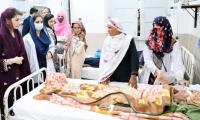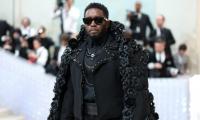If any doubts remain about the nefarious influence of the National Rifle Association (NRA) on the political life of the United States, President Donald Trump’s decision to discuss gun control measures with that organization should dispel them.
The offer to discuss these measures is like asking a criminal for his weapon of choice in order to hand it over. This obsequiousness equals that of many legislators, mainly Republican, who refuse to pass effective legislation on gun control measures out of fear of losing NRA support. Scores of people stand to lose, among them a significant number of children and adolescents, whose lives end needlessly by criminal violence.
Children and teens in the United States experience much higher rates of gun deaths and injuries than in any other industrialized country. In 2016, guns killed twice as many children as did cancer; only vehicle crashes were a higher cause of death. That same year, firearm-related injuries killed 3,143 children, while cancer caused 1,893 childhood deaths.
When compared to other countries, the statistics are also surprising. In 2016, children in the US were 36 times more likely to be killed by a gun than the total number of children in the other 12 wealthiest countries in the world. There is also a big difference between the US and low-to-middle income countries. There were five times as many child gun deaths in the former than in the latter, according to 2016 data (the last year this information was available).
The consequences of gun violence are also felt in other ways. Children and teens are affected when a friend or family member is killed or harmed, or when they witness deadly gun violence. School shootings leave scores of children with post-traumatic-stress disorder, leading some to commit suicide. Many of the survivors suffer other serious psychological consequences.
The impact of gun violence is not shared equally across populations. In the US, African American and Latino children experience higher rates of gun violence than their white peers; they are 22 and 14 times, respectively, more likely to die by gun homicide than their white counterparts. To a large extent, this is the result of political decisions that create segregated neighborhoods and do not provide economic incentives for development.
So far, the response of both the president and most legislators to this dire situation have been inadequate. Senate Majority leader Mitch McConnell, a well-known supporter of gun rights, refused to convene the Senate back early to discuss this crisis or to commit addressing it with the urgency and care it deserves.
The president’s flippant attitude belittles the problem. At first, he stated his support for more extensive background checks of potential arms purchasers. Later he spoke to Wayne LaPierre, chief executive of the NRA, after which he told reporters, “People don’t realize we have very strong backgrounds checks rights now. You go in to buy a gun, you have to sign up. There are a lot of background checks that have been approved over the years, so I’ll have to see what it is.”
A useful comparison can be made between the US and Japan, a country with one of the lowest rates of gun crime in the world. In 2014, there were six gun deaths in Japan, compared to 33,599 in the US. Handguns are banned, and only shotguns and air rifles are permitted. In addition, there are mental health and drug tests, and the applicant’s criminal record is checked, as are the records of relatives and sometimes of their co-workers.
As a result, gun ownership in 2007 was only 0.6 guns per 100 people in Japan, compared to 6.2 in England and Wales and 88.8 in the US.
Excerpted from: ‘The NRA vs. American Children’.
Courtesy: Counterpunch.org
After November 30, it will be impossible for ordinary internet users to access all banned websites, including X
Muslims participated alongside their Hindu fellow villagers and other residents of area
For last eight years, HEC's budget has been virtually stagnant in absolute terms
Home to 14 million people, Lahore has always been celebrated as Pakistan’s historical, culinary, and cultural hub
Partnership between Pakistan and China in media and culture reflects shared commitment to strengthening bilateral...
This article focuses on single error committed by our respected judiciary which haunts me more than I would care to...







